If you’re a resident of California, perhaps you’ve seen signs on the shelves of your local store that say “Proposition 65 Warning: This product is known by the state of California to contain chemicals that can cause cancer.” Depending on the outcome of an upcoming court case, you may be seeing this sign at your local coffee shop.
 Since 2010, a lawsuit has been moving through California courts that aims to require coffee sellers to put up signs warning coffee-drinkers that their beverage of choice contains the chemical acrylamide. Retailers from coffee shops to grocery stores would be required to post a warning label that coffee contains chemicals known by the state to cause cancer. While some see this as an excessive move on the part of consumer protection lawyers, similar actions have been effective in the past. (In 2008, for example, potato chip manufacturers were ordered to remove acrylamide from their products.)
With all the research proving the ample health benefits of coffee, conflicting news may be confusing and troubling. Does the possibility of acrylamide ingestion mean coffee poses more of a health risk than a boon?
Since 2010, a lawsuit has been moving through California courts that aims to require coffee sellers to put up signs warning coffee-drinkers that their beverage of choice contains the chemical acrylamide. Retailers from coffee shops to grocery stores would be required to post a warning label that coffee contains chemicals known by the state to cause cancer. While some see this as an excessive move on the part of consumer protection lawyers, similar actions have been effective in the past. (In 2008, for example, potato chip manufacturers were ordered to remove acrylamide from their products.)
With all the research proving the ample health benefits of coffee, conflicting news may be confusing and troubling. Does the possibility of acrylamide ingestion mean coffee poses more of a health risk than a boon?
 The smokeless roasting process that Purity uses means that dangerous PAHs are avoided while minimizing the level of acrylamide in our coffee. Each bag of Purity coffee is carefully crafted to give a heavy dose of antioxidants while getting rid of as many unhelpful compounds as possible.
The smokeless roasting process that Purity uses means that dangerous PAHs are avoided while minimizing the level of acrylamide in our coffee. Each bag of Purity coffee is carefully crafted to give a heavy dose of antioxidants while getting rid of as many unhelpful compounds as possible.
 Since 2010, a lawsuit has been moving through California courts that aims to require coffee sellers to put up signs warning coffee-drinkers that their beverage of choice contains the chemical acrylamide. Retailers from coffee shops to grocery stores would be required to post a warning label that coffee contains chemicals known by the state to cause cancer. While some see this as an excessive move on the part of consumer protection lawyers, similar actions have been effective in the past. (In 2008, for example, potato chip manufacturers were ordered to remove acrylamide from their products.)
With all the research proving the ample health benefits of coffee, conflicting news may be confusing and troubling. Does the possibility of acrylamide ingestion mean coffee poses more of a health risk than a boon?
Since 2010, a lawsuit has been moving through California courts that aims to require coffee sellers to put up signs warning coffee-drinkers that their beverage of choice contains the chemical acrylamide. Retailers from coffee shops to grocery stores would be required to post a warning label that coffee contains chemicals known by the state to cause cancer. While some see this as an excessive move on the part of consumer protection lawyers, similar actions have been effective in the past. (In 2008, for example, potato chip manufacturers were ordered to remove acrylamide from their products.)
With all the research proving the ample health benefits of coffee, conflicting news may be confusing and troubling. Does the possibility of acrylamide ingestion mean coffee poses more of a health risk than a boon?
What is acrylamide and how does it form?
Acrylamide is a chemical compound that develops in foods like baked goods, French Fries, and roasted coffee. The compound was only identified in 2002, and ever since then scientists have been working to establish databases that catalogue the acrylamide content of different foods. They’ve also worked to identify the cooking process and chemical precursors that lead to acrylamide developing, and have discovered that it revolves around something called the Maillard reaction. The Maillard reaction refers to a whole battery of small chemical reactions that take place while food is cooking. The browning that one recognizes in a piece of toasted bread or other baked goods is the result of the Maillard reaction, and many cooks also credit the development of flavor in cooked food to this reaction. Certain amino acids and sugars, particularly free asparagine molecules, create acrylamide as a natural byproduct. The amount of this precursor chemical present in the raw ingredients often dictates how much acrylamide develops within a given food item. As the roast continues, though, there tend to be fewer and fewer of acrylamide compounds present. One study found that only about 20% of the acrylamide that developed at the beginning phase of roasting was present by the time roasting was completed. You might think, if roasting is good that maybe more roasting is better, but over-roasting can lead to problems of its own.Risks of over-roasting
Scientists have not just been looking into how acrylamide forms, but also how it ranks in the hierarchy of health risks. At this point, even the authors of scientific studies on acrylamide recognize that completely removing this particular compound from food may affect its nutritional value, and not necessarily in a health-promoting way. For instance, the authors of a 2008 risk/benefit analysis “stressed that in parallel to the reduction of acrylamide, appropriate comparison of added risks and or reduced benefits v. the benefit from acrylamide reduction was needed.” Acrylamide has been proven in laboratory studies to cause cancer in rats, though it’s unclear how great their risk is to humans. Burning coffee by roasting it too much and at too high a temperature leads to the development of polycyclic aromatic hydrocarbons (PAHs), which are also proven to be carcinogenic to laboratory animals. PAHs form when smoke or flames react with the surface of the food being cooked (or coffee bean being roasted). Their correlation to cancer in humans has been heavily documented, particularly in the context of grilled and smoked meats.Minimizing risky compounds and maximizing healthy ones
A common adage is, “the harm is in the dosage,” and in the case of chemical compounds found in coffee, it remains relevant. Purity Coffee always takes careful aim for the “sweet spot” between two extremes: getting rid of as much acrylamide as possible while avoiding over-roasting. The smokeless roasting process that Purity uses means that dangerous PAHs are avoided while minimizing the level of acrylamide in our coffee. Each bag of Purity coffee is carefully crafted to give a heavy dose of antioxidants while getting rid of as many unhelpful compounds as possible.
The smokeless roasting process that Purity uses means that dangerous PAHs are avoided while minimizing the level of acrylamide in our coffee. Each bag of Purity coffee is carefully crafted to give a heavy dose of antioxidants while getting rid of as many unhelpful compounds as possible.
Sources:
- Mottram et al. (2002) “Acrylamide is formed in the Maillard reaction.” Nature, 419(6906):448-9
- Schulze, Eric (2017) “An Introduction to the Maillard Reaction: The Science of Browning, Aroma, and Flavor.” Serious Eats. Accessed October 5, 2017
- Seal et al. (2008) “Risk-benefit considerations of mitigation measures on acrylamide content of foods--a case study on potatoes, cereals and coffee.” Br J Nutr. 99 Suppl2:S1-S46
- Seal et al. (2008) “Cooked Meats Fact Sheet.” Cancer.gov. National Cancer Institute. Accessed October 5, 2017








Leave a comment